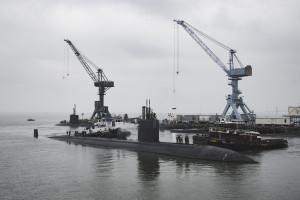
The Navy’s top officer Thursday castigated two companies that build Navy submarines for underperforming on contracted maintenance work on attack submarines. “Based on the fact that we continue to build a viable submarine force, and we know that we don't have the capacity in our public shipyards to handle all of that maintenance, we need Electric Boat, and we need Huntington Ingalls to be able to do that work. They are underperforming. They are over cost and way over schedule,”…

 By
By 











